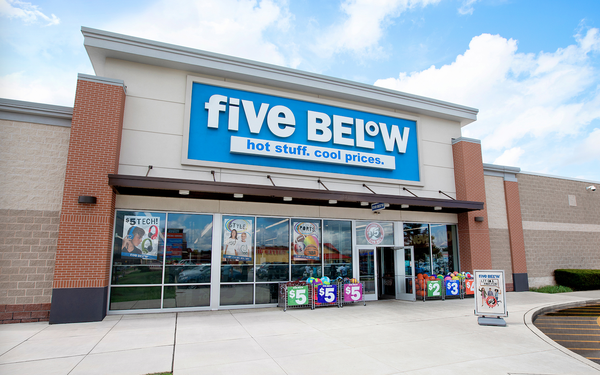retail
In Loyalty 'Calamity,' Retailers Look To Rebuild Pricing Trust
- by Sarah Mahoney @mahoney_sarah, January 30, 2024

Discount stores like Five Below are one of the few retail channels showing growth.
Inflation may be slowing, but two years of surging prices have claimed a clear casualty: loyalty to retailers. And with discount stores the only significant gainers last year, companies realize they will have to do more to win back brand defectors.
A new report from Deloitte says that even though consumers are still trying to shake off the impact of that 40-year inflationary high that hit in June 2022 and 11 interest rate hikes, shoppers aren’t retreating.
“Consumers continue their consumption binge, with some benefiting from wage increases while others are presumably burning through savings and accumulating debt,” the new report notes.
But that doesn’t mean they’re not paying attention, with 75% saying they are still concerned about rising prices, even though inflation is approaching the target rate of 2%.
advertisement
advertisement
That’s translating into dramatic shifts in where they are spending. People have stormed into discount stores, marking a 26% spending increase from 2019 to 2023. And there was a 3% rise in those shopping at mass stores. Club stores gained, too, albeit by less than 1%.
People spent less in every other channel, however, in that five-year span. Department stores took the worst hit, with shoppers down 11%, followed by sporting goods, down 9%; home improvement, down 7%; and footwear and apparel off by 4%.
Deloitte is forecasting continued growth in retail spending at a rate just below GDP growth, aided by continued low unemployment and rising productivity.
Loyalty programs continue to be one of the best ways retailers can lock in customers, and about two-thirds of adults belong to between one and five such programs. But Deloitte says most people don’t use more than half of those membership perks.
The result is a “loyalty calamity,” the report says. Much of the shake-up stemmed from disruptions of the early pandemic. Amid widespread supply chain disruptions, “three in four consumers tested new brands and stores as they faced empty shelves,” it says. And just as stores were trying to rekindle their loyalty bonds, inflation hit, once again pushing shoppers toward lower-priced alternatives.
At the same time, the math on finding new customers to replace once-loyal shoppers gets worse all the time, with customer acquisition costs increasing 222% in the past decade.
To achieve profitable growth, stores need to keep customers in their fold. In Deloitte’s ranking of the 39 largest retailers in the U.S., those characterized as outperformers expect revenue growth of 5% or more this year and are expected to be 2.6 times more profitable than peers in the next two years. Yet underperformers, who place less emphasis on loyalty marketing, predict growth of just 1% to 4%.
To tighten loyalty bonds, the consulting company suggests retailers focus on better in-store experiences, since 75% of shoppers say they are more loyal to stores that show consistent customer service and experiences.
AI can also play a key role -- as long as retail brands are careful. Trust in a brand drops by 144% when consumers know a brand is using AI. And while the technology offers much potential for creating engaging personalized experiences at scale, only half the retail executives in the survey are confident in their company’s ability to use AI effectively.




